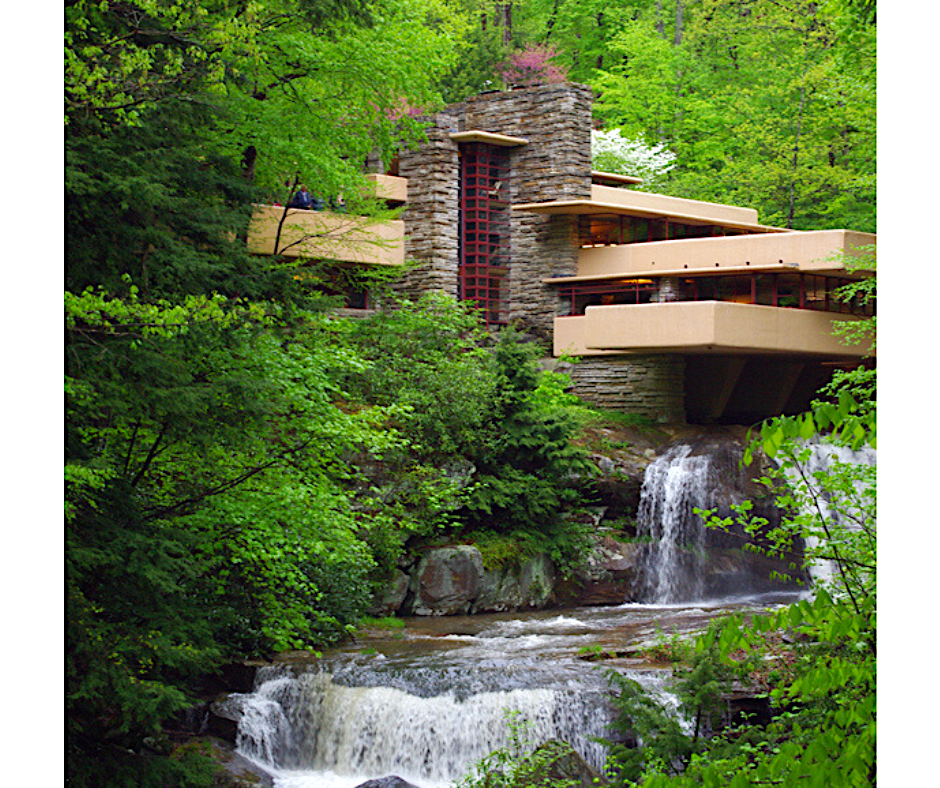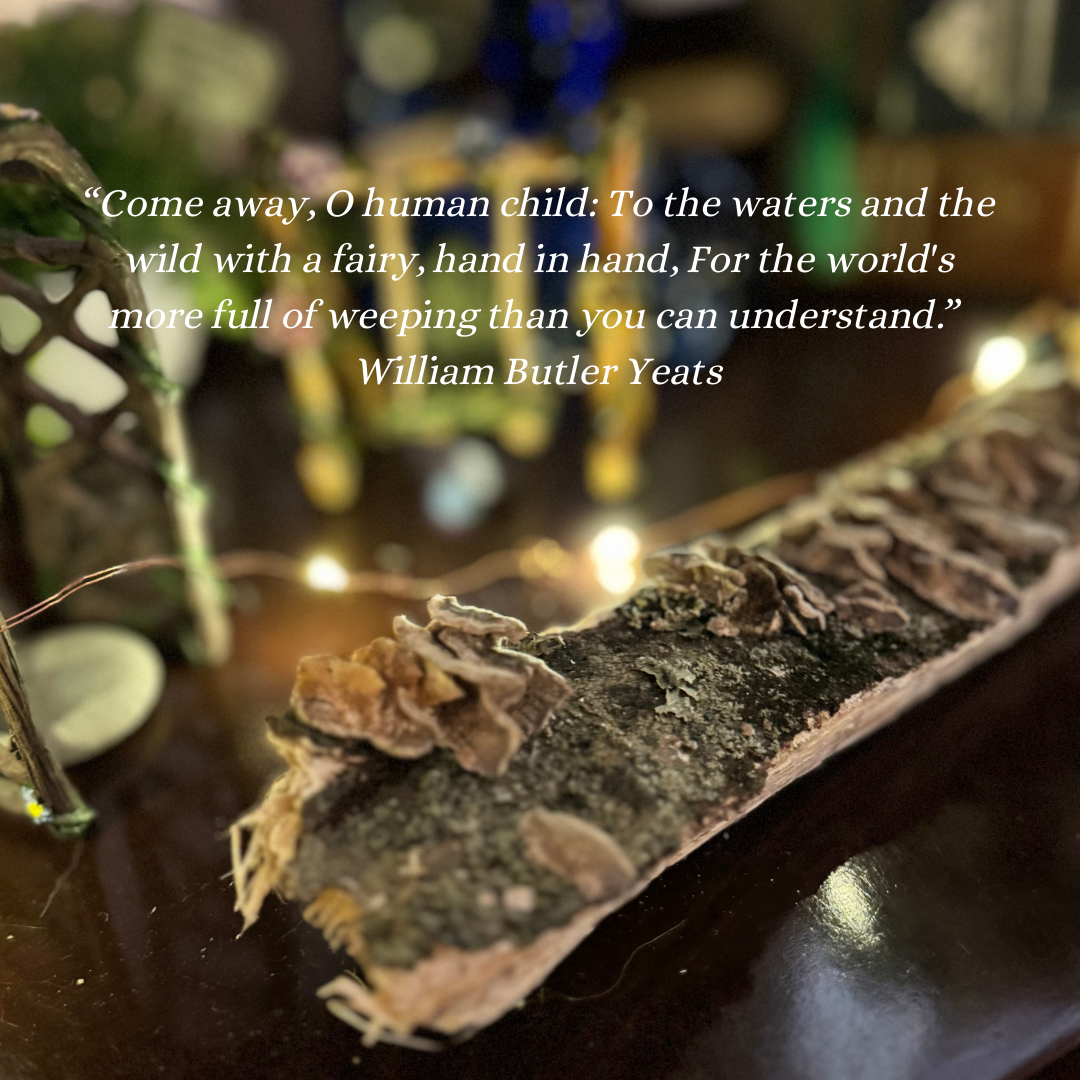|
I was exposed to the works of many designers and architects while in college for interior design, and one of them was the great 20th-century architect and designer Frank Lloyd Wright. I encountered his name and images of his buildings from time to time in my studies and was intrigued. One day, I came across a picture of this home called Fallingwater—which just happened to be located in my home state of Pennsylvania. It was love at first site! Right then and there, I put this trip on my bucket list. Someday, somehow, I would get there to see it in person. And about seven years ago, I did. For our 15th wedding anniversary, my husband and I planned a trip out to western Pennsylvania to see Fallingwater and another of Frank Lloyd Wright’s creations, Kentuck Knob (more about that in a future post). So if you don’t know what Fallingwater is, it is a residential home built for Edgar and Liliane Kaufmann in 1936-1937 in rural western Pennsylvania, southeast of Pittsburgh. The building was designed to “float” over an existing waterfall, nestled into and protruding from a rock as if part of the landscape itself. It was raining the day I visited Fallingwater—not pouring down rain, but just a steady, rhythmic rain with big, sloppy raindrops. You might be tempted to think my trip was ruined, but the rain only enhanced the experience! Frank Lloyd Wright designed his buildings with nature and the surrounding landscape in mind, always trying to create an organic experience in which the occupant can be exposed to nature. The building becomes a harmonious “growth” in the landscape. And that was certainly the case with Fallingwater. This incredibly sculptural—yet geometric—building was just nestled in the trees, and at times, it was hard to tell where the landscape ended and the home began. The warm weather (this was in May) and steady rain meant that the building was visually wrapped in a verdant blanket of trees and bushes. On the day of our visit, we drove through some small rural country roads to get to the visitor’s center parking lot. Once we parked, we found the path with well-manicured grounds on either side that led up to the visitor’s center, gift shop, and this gorgeous gazebo. We waited in the gazebo for our group number (the house tours are limited to a certain number of people at a time), and while waiting, we enjoyed a 360-degree view of the luscious green foliage and watched the rain drip from the eaves. The trek to the actual house involves a “forced” meander down a very long (but very walkable) pathway, the sound of the waterfalls becoming gradually louder until you turn a corner and see the building…but only just a bit through the trees. The walk seemed like it took forever, and you don’t get a good view until you are right on top of the structure, but once at the destination, it’s like a release, and the view opens up to you! It’s a similar experience to the type of reaction FLW wanted people to have inside his buildings. So, I stood on this bridge, not knowing whether this was the front or side of the home—a little trick FLW loved to play with his architecture. But I didn’t care—I was just in awe of the vision before me. Before this trip, I knew about the linear geometric design of this building. But, I was not prepared for the emotional experience of seeing this creative bit of architecture springing organically out of the side of the landscape. As I stood there looking at the steps that led down to the water’s edge, I found myself overwhelmed not only by the fact that I was standing there looking at this magnificent structure in person but the way it interacted with its surroundings. My senses were inundated with the smell of the rain, the sight of water dripping all around, the vibrant greenery around us, and the sound of the waterfall roaring alongside and just under a cantilever portion of the home. Parts of the house float above the waterfall, reaching out towards the forest and the trees, while other parts seem to be embedded into the rock. Although I loved modern design and nature long before I discovered Frank Lloyd Wright, he has been one of the biggest—if not THE biggest—influences on my design sense. I also feel a close emotional connection with his use of Japanese design about light, space, line and form, and natural materials. The essence of nature fused with human creativity excites me and influences my designs and artwork. This trip to Fallingwater opened my eyes to what can be achieved when working with both elements. I’ve already decided to return someday—maybe next time at a different time of year to see the building reacting to the natural world during another season!
0 Comments
Leave a Reply. |
Author
Some of the posts on this site contain affiliate links. This means if you click on the link and purchase the item, I will receive an affiliate commission. Categories
All
Archives
October 2025
|







 RSS Feed
RSS Feed
